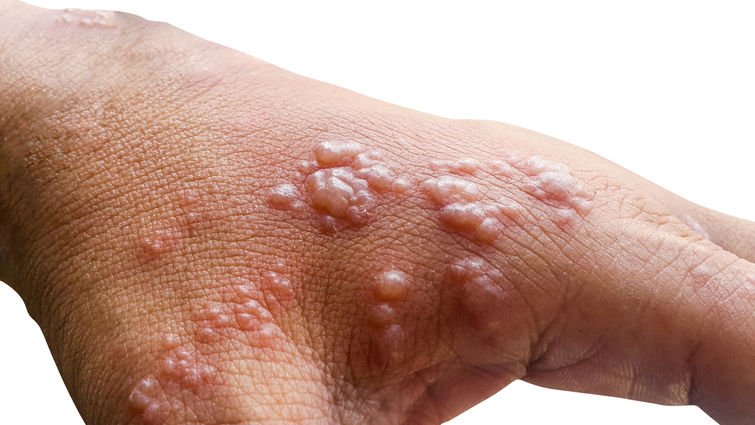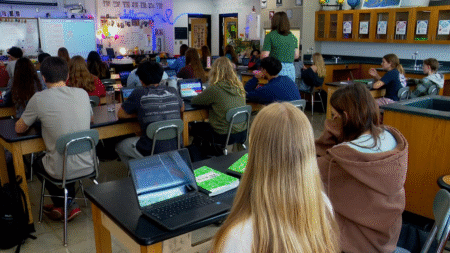Monkeypox is a rare viral disease caused by the monkeypox virus, which is part of the Orthopoxvirus family, the same family as smallpox. The disease was first identified in monkeys in the late 1950s but mainly spreads through wild animals, especially rodents, in Central and West Africa. Human infections were first reported in the 1970s. Since then, monkeypox has been considered an uncommon disease, mostly occurring in remote parts of Africa. However, recent outbreaks outside endemic areas have raised global awareness about the virus.
The monkeypox virus spreads primarily through close contact. It can be transmitted through direct contact with the skin lesions, sores, or bodily fluids of an infected person. Contaminated objects like bedding, clothing, or surfaces can also carry the virus. Prolonged face-to-face exposure can allow the virus to spread via respiratory droplets. Contact with infected animals through bites, scratches, or handling bushmeat is another source of infection. Because of these modes of transmission, avoiding close skin-to-skin contact and maintaining good hygiene are essential to prevent infection.
Symptoms of monkeypox typically begin with fever, headache, muscle aches, and swollen lymph nodes, which distinguish it from smallpox. Fatigue and exhaustion are also common. After a few days, a rash develops, often starting on the face and then spreading to other parts of the body. This rash changes through several stages, starting as flat red spots, turning into raised bumps, then fluid-filled pustules, which finally crust over and fall off. The entire illness usually lasts two to four weeks and is mostly mild. However, severe cases can occur, particularly among young children, pregnant women, or people with weakened immune systems.
Diagnosing monkeypox requires careful examination of symptoms and laboratory tests, such as polymerase chain reaction (PCR) tests, which detect the virus’s genetic material from skin lesion samples. There is no specific antiviral treatment approved for monkeypox, but medical care focuses on relieving symptoms, preventing complications, and supporting the patient’s immune response. Experimental antivirals originally developed for smallpox may be used in severe or complicated cases.
Preventing monkeypox involves several important measures. Avoiding direct contact with individuals who have visible rashes or sores that resemble monkeypox is crucial. It is also important to avoid sharing bedding, clothing, or utensils with infected persons. Practicing good hand hygiene by washing hands regularly with soap and water or using alcohol-based hand sanitizers helps reduce the risk of infection. Smallpox vaccines have been shown to provide some protection against monkeypox. Vaccination is recommended for people at higher risk, including healthcare workers and close contacts of confirmed cases. Isolation of infected individuals is essential to limit the spread of the virus.
In 2022, monkeypox cases appeared outside the usual endemic regions in Africa, causing outbreaks in several countries worldwide. This led the World Health Organization (WHO) to declare monkeypox a Public Health Emergency of International Concern. Since then, health authorities globally have increased surveillance, public education, and vaccination efforts to control the spread. Countries have worked closely with WHO and local health agencies to monitor cases, conduct contact tracing, and promote responsible behavior to prevent new infections.
The situation in the Philippines shows that monkeypox cases remain under control. Health authorities are actively monitoring cases and conducting awareness campaigns to inform the public about symptoms and how to prevent transmission. Testing and contact tracing have been intensified to detect cases early. Health Secretary Teodoro Herbosa reported a slight rise in some local areas, but the total cases are still lower compared to the same period last year. The Philippines is not currently listed by WHO as a country facing a public health emergency due to monkeypox.
Experts agree that containment measures such as early detection, isolation, and public education are key to managing the outbreak. Understanding how monkeypox spreads and recognizing its symptoms can help people take appropriate precautions. Avoiding close skin-to-skin contact with infected individuals, maintaining good hygiene, and seeking medical advice when symptoms appear are essential steps in stopping the virus from spreading further.
Monkeypox, while generally mild and self-limiting, requires vigilance from individuals and health authorities to prevent outbreaks. Ongoing efforts to monitor cases, increase awareness, and promote vaccination will continue to play an important role in controlling this disease worldwide.







